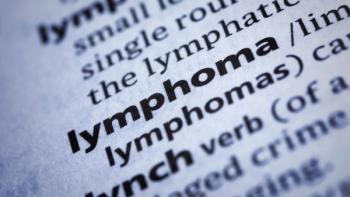
Researchers Find Predictors of Persistent Opioid Use Among Older Women with Breast Cancer
Although most older women with breast cancer didn’t use the painkillers persistently, new study findings show women who received chemotherapy were at greater risk of new-onset persistent use.
Amid the opioid crisis in the United States, researchers wanted to see if persistent use was a concern among older patients with breast cancer who may be prescribed the painkillers after active treatment.
They learned that persistent opioid use was infrequent among women with the disease aged 66 to 90, according to study findings published in Cancer.
Using the Surveillance, Epidemiology, and End Results—Medicare database — a collection of information from 19 cancer registries across the U.S. — the researchers examined women who received a diagnosis of stage zero to stage 3 breast cancer between 2008 and 2013.
The researchers, who were from the University of Kansas Medical Center and the Medical College of Wisconsin, defined new-onset persistent opioid use as a 90-day or greater supply of the drug during a one-year follow-up period after the end of active breast cancer treatment.
A group of nearly 25,000 women — more than 80% were white — were analyzed. Two-thirds had received a stage zero or stage 1 breast cancer diagnosis, resulting in a partial mastectomy (57%) or full mastectomy (36%). In addition, half of the women received radiation, 18% hormone therapy, 16% chemotherapy and 3.5% reconstructive surgery.
Forty percent did not receive any opioid therapy during active cancer treatment and nearly a quarter received opioid therapy for more than 10% of their active cancer treatment period, according to the researchers.
The researchers discovered that nearly half of the group filled at least one opioid prescription after active treatment. However, only 2.8% developed new-onset persistent opioid use, which was more common among women who received chemotherapy compared with those who didn’t. With hormone therapy treatment, the risk of new-onset persistent opioid use was 35% lower than those who received chemotherapy.
“The risk of new-onset persistent opioid use significantly increased as the breast cancer stage, baseline comorbidity burden and length of active cancer treatment increased,” reported the researchers.
They added: “Black women were less likely to develop new-onset persistent opioid use than white women, as were women who did not receive the low-income subsidy or lived in areas with a higher median household income.”
Although the researchers didn’t find persistent opioid use among the women, they noted that it could become an issue as the rate of breast cancer diagnoses and long-term survival increases.
“Patients with cancer experience a high prevalence of chronic pain after completing active treatment and comorbid mental health conditions associated with an increased risk for opioid addiction and overdose,” explained the researchers.
But in identifying these predictors, the researchers hope health care professionals can use the information in targeting efforts to prevent unnecessary persistent opioid use in women with breast cancer.
“There is likely room for improvement in preventing unnecessary persistent opioid use and its potentially adverse clinical consequences,” the researchers concluded.




